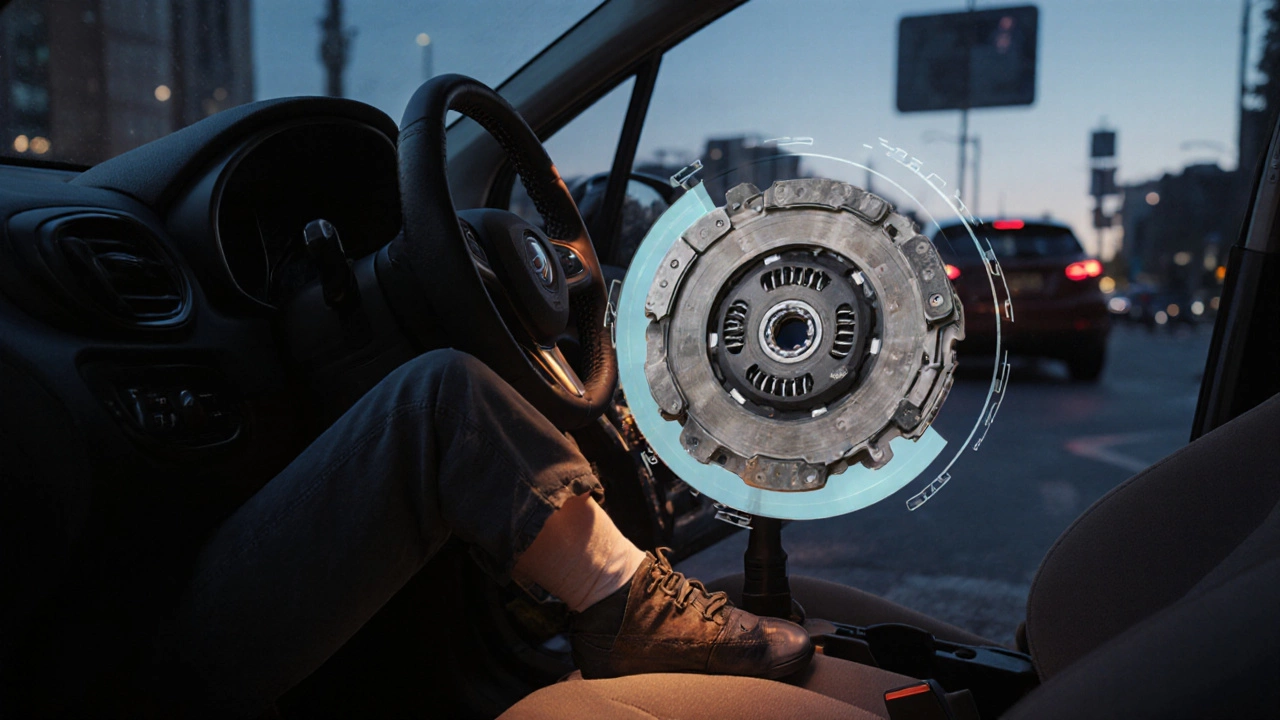
Clutch Symptoms: Signs Your Clutch Is Failing and What to Do Next
When your clutch, the component that connects your engine to the transmission and lets you shift gears smoothly. Also known as clutch assembly, it’s one of the most abused parts in a manual car. Starts acting up, it doesn’t just make driving annoying—it can leave you stuck on the side of the road. Unlike a flat tire or dead battery, clutch problems don’t always scream for help. They whisper. A slight slip here, a weird smell there. If you ignore them, you’re not just risking a breakdown—you’re risking a $1,200+ repair when a $300 fix could’ve saved you.
Clutch symptoms usually show up in three ways: clutch wear, the gradual thinning of the friction material that lets the clutch grip the flywheel, burnt clutch, when the clutch overheats from riding the pedal or aggressive driving, leaving a sharp, burnt toast smell, and clutch failure, the point where the clutch stops engaging entirely, making it impossible to move the car. These aren’t abstract concepts—they’re real, measurable problems. A worn clutch might slip when you accelerate uphill. A burnt clutch will make your car smell like a charred pancake. A failed clutch? Your car won’t move, no matter how hard you press the pedal.
What causes this? Mostly, it’s how you drive. Riding the clutch pedal at traffic lights, revving too high in low gears, or “clutch kicking” to get quick starts all eat away at the friction plate faster than you think. Even normal driving in heavy city traffic wears it down—just slower. Most clutches last between 60,000 and 100,000 miles, but if you’re doing a lot of stop-and-go driving in Delhi or Mumbai, yours could be done by 40,000. And if you hear a grinding noise when shifting, or feel the pedal go softer than usual, that’s not normal. It’s the clutch telling you it’s tired.
You don’t need to be a mechanic to spot these signs. If your car hesitates when you shift, or the engine revs but the car doesn’t speed up, that’s clutch slip. If you smell something burning after driving hard, that’s clutch overheating. If the pedal feels spongy or goes all the way to the floor, that’s air in the hydraulic line or a worn-out release bearing—both linked to clutch health. These aren’t guesses. These are the exact signs reported by mechanics and car owners in hundreds of real cases.
What you’ll find below are real, no-fluff guides on what these symptoms actually mean, how much it costs to fix them, how long the repair takes, and whether you can do it yourself. No theory. No marketing. Just what works—and what doesn’t—based on what people in India are actually experiencing with their cars. Whether you’re trying to avoid a surprise bill or just want to know if your clutch is on its last legs, these posts give you the facts you need to decide what to do next.
-
18 Oct

-
13 Oct

Common Signs Your Car Has a Bad Clutch - How to Spot Problems Early
Learn the key symptoms of a bad clutch, how to diagnose issues, when to replace parts, and tips to keep your clutch working smoothly. -
8 Oct

Do I Need a New Clutch Kit? Signs, Checks, and Costs
Learn the signs that your vehicle needs a new clutch kit, how to inspect it yourself, what a kit includes, costs in the UK and when to DIY or seek a professional.





